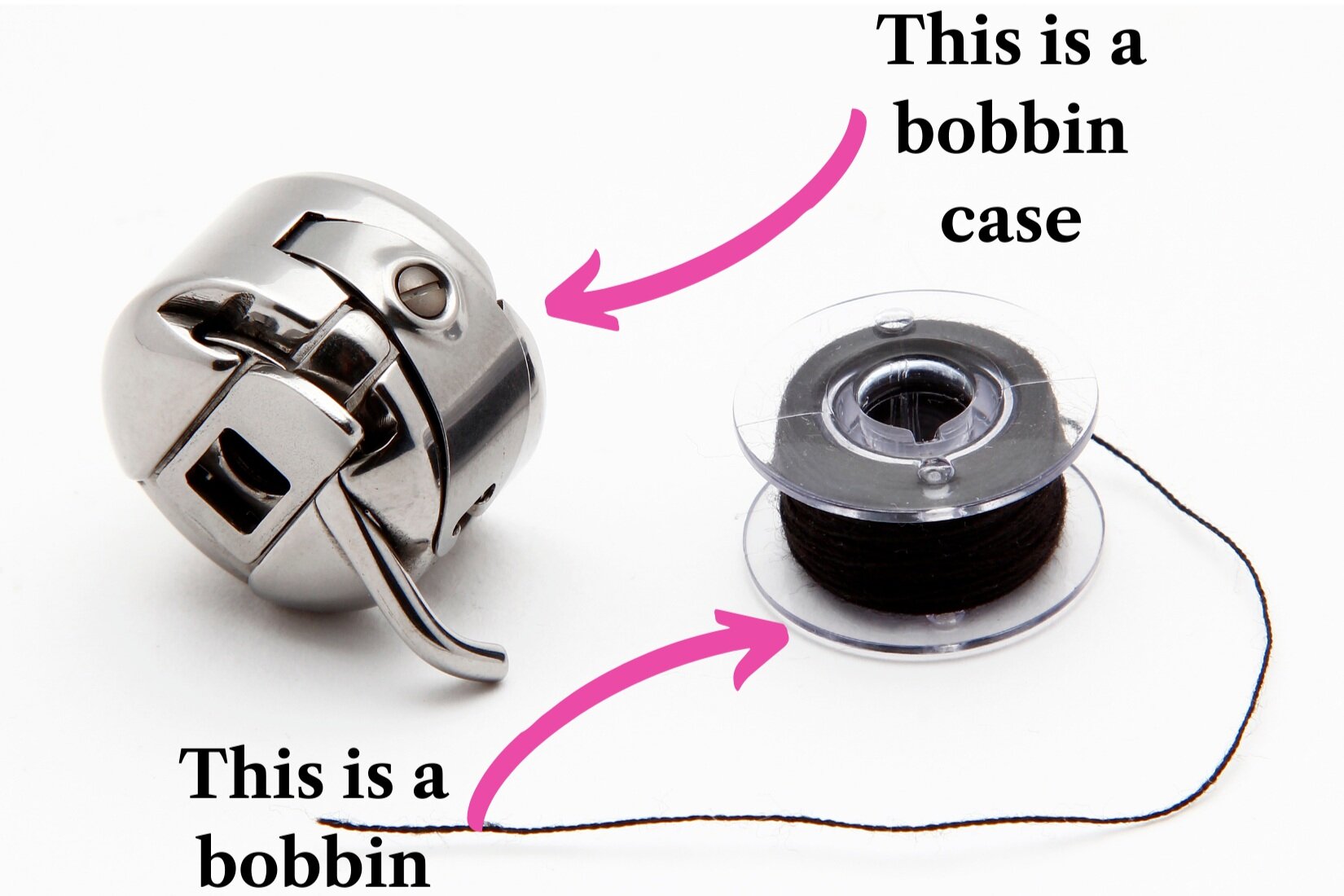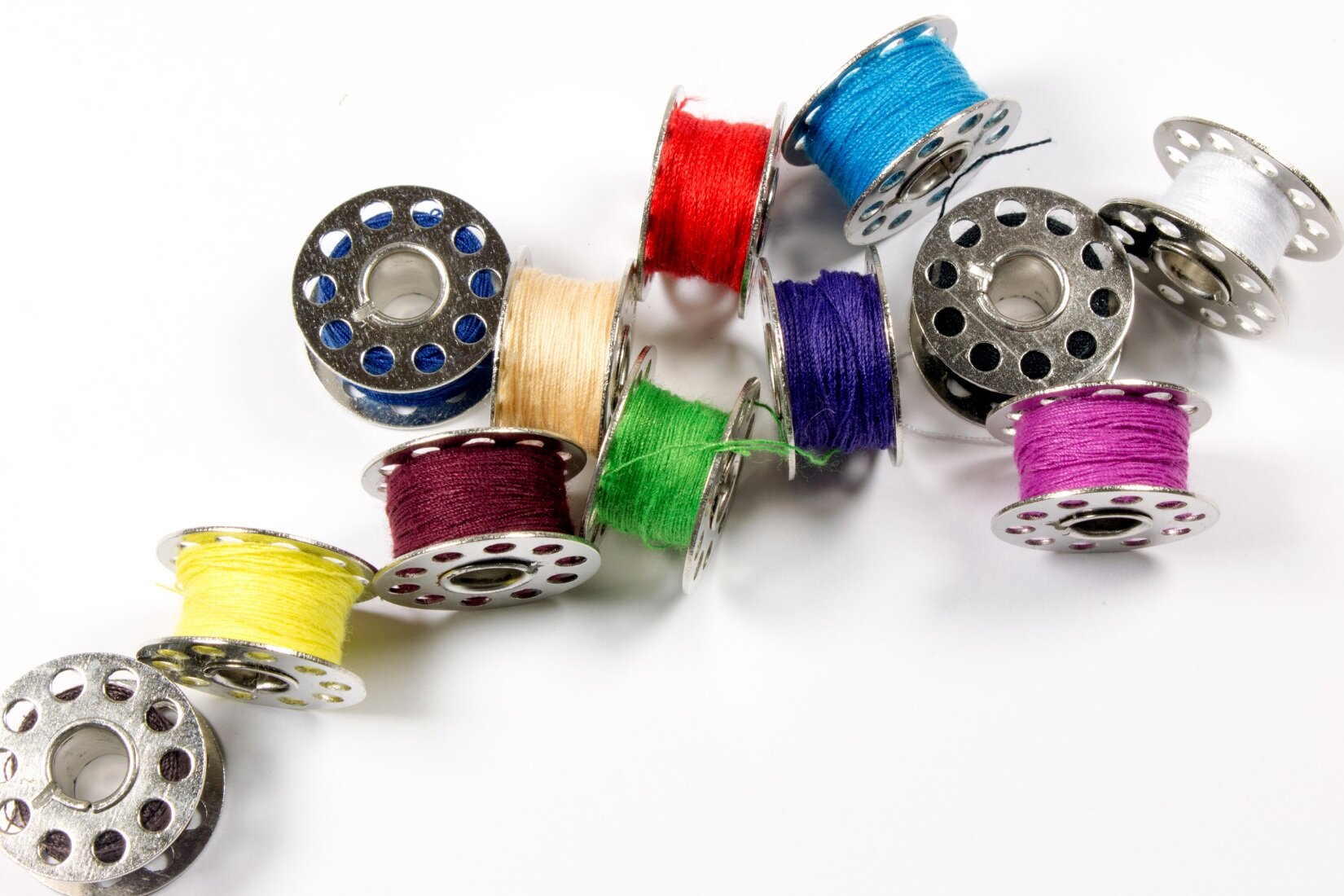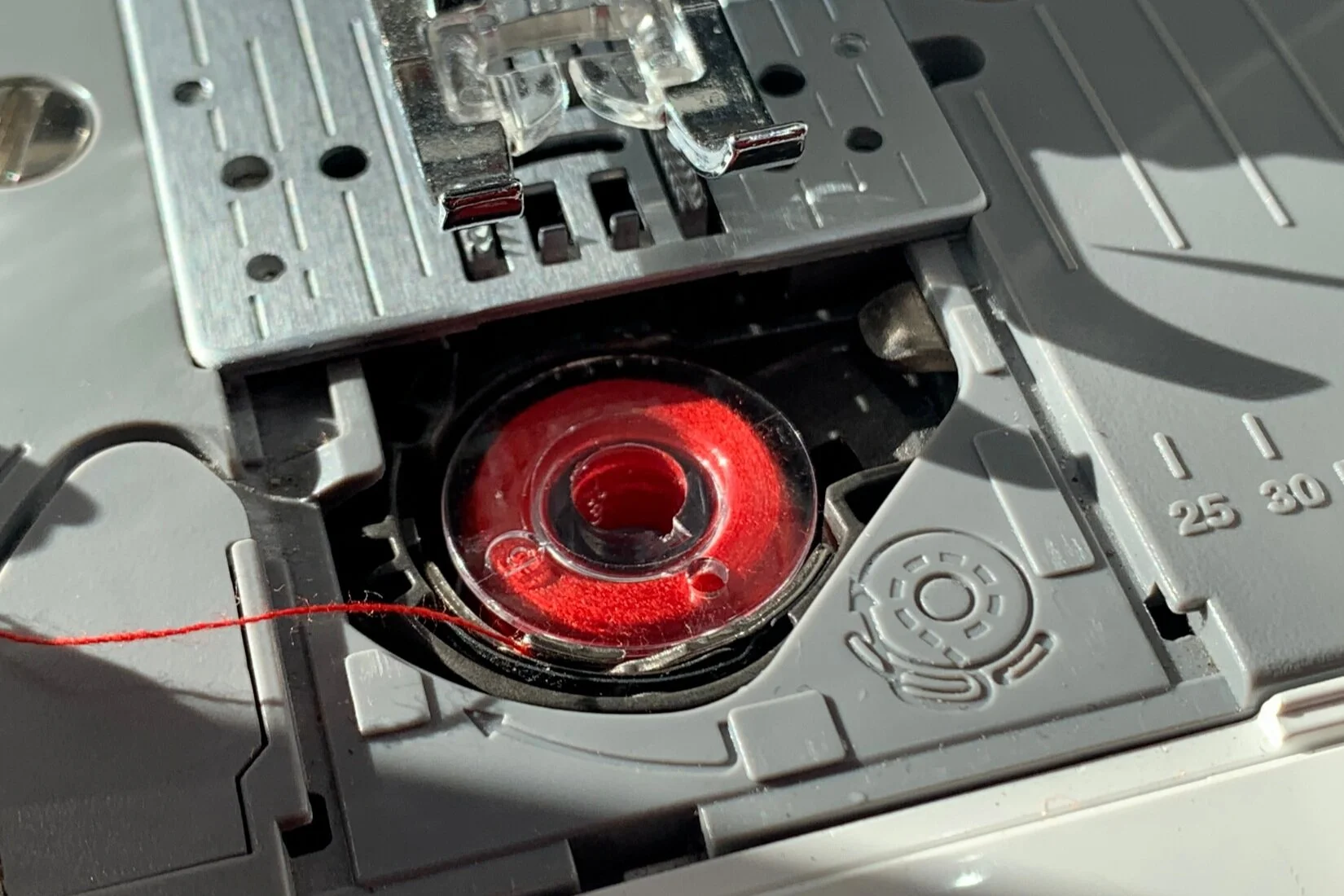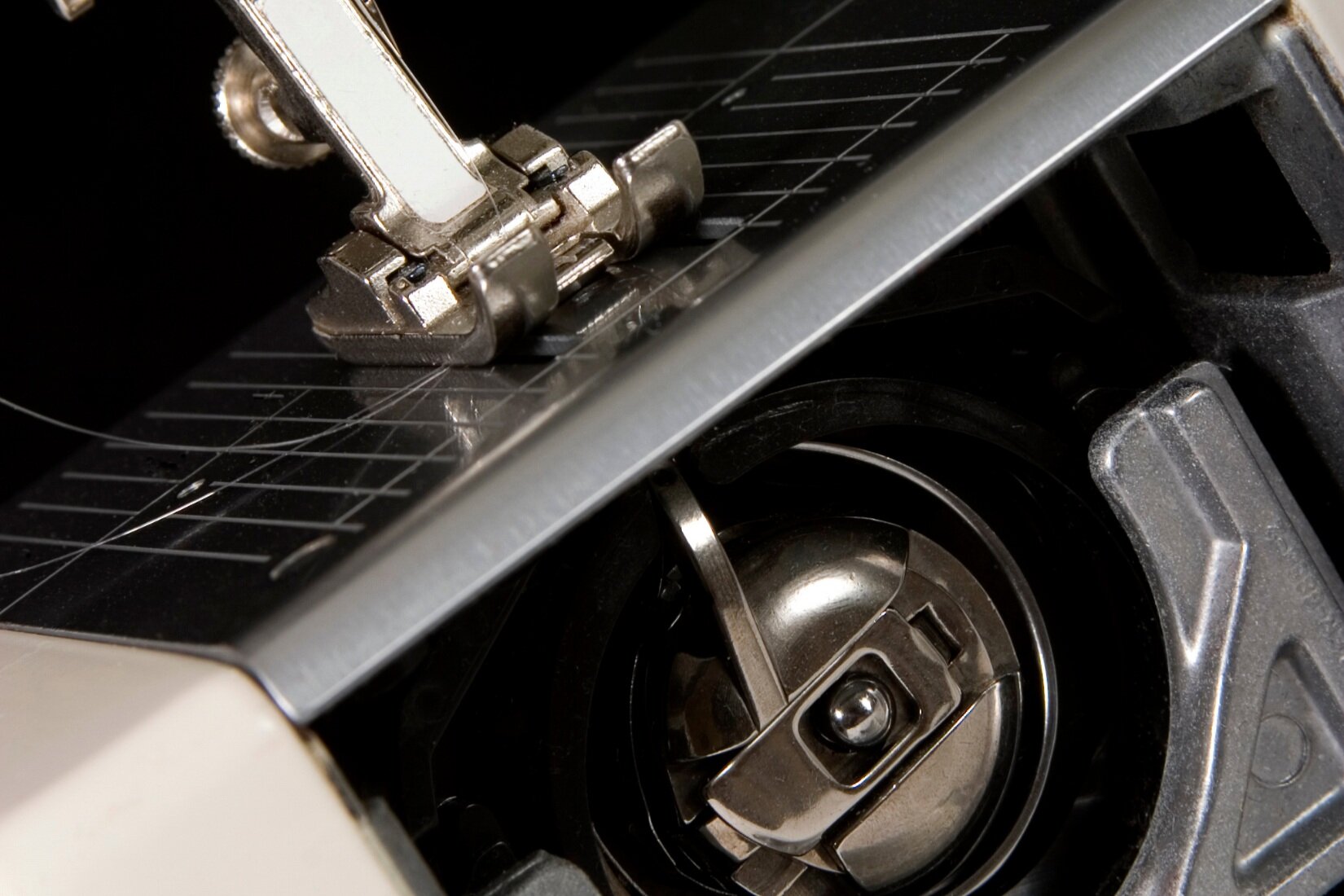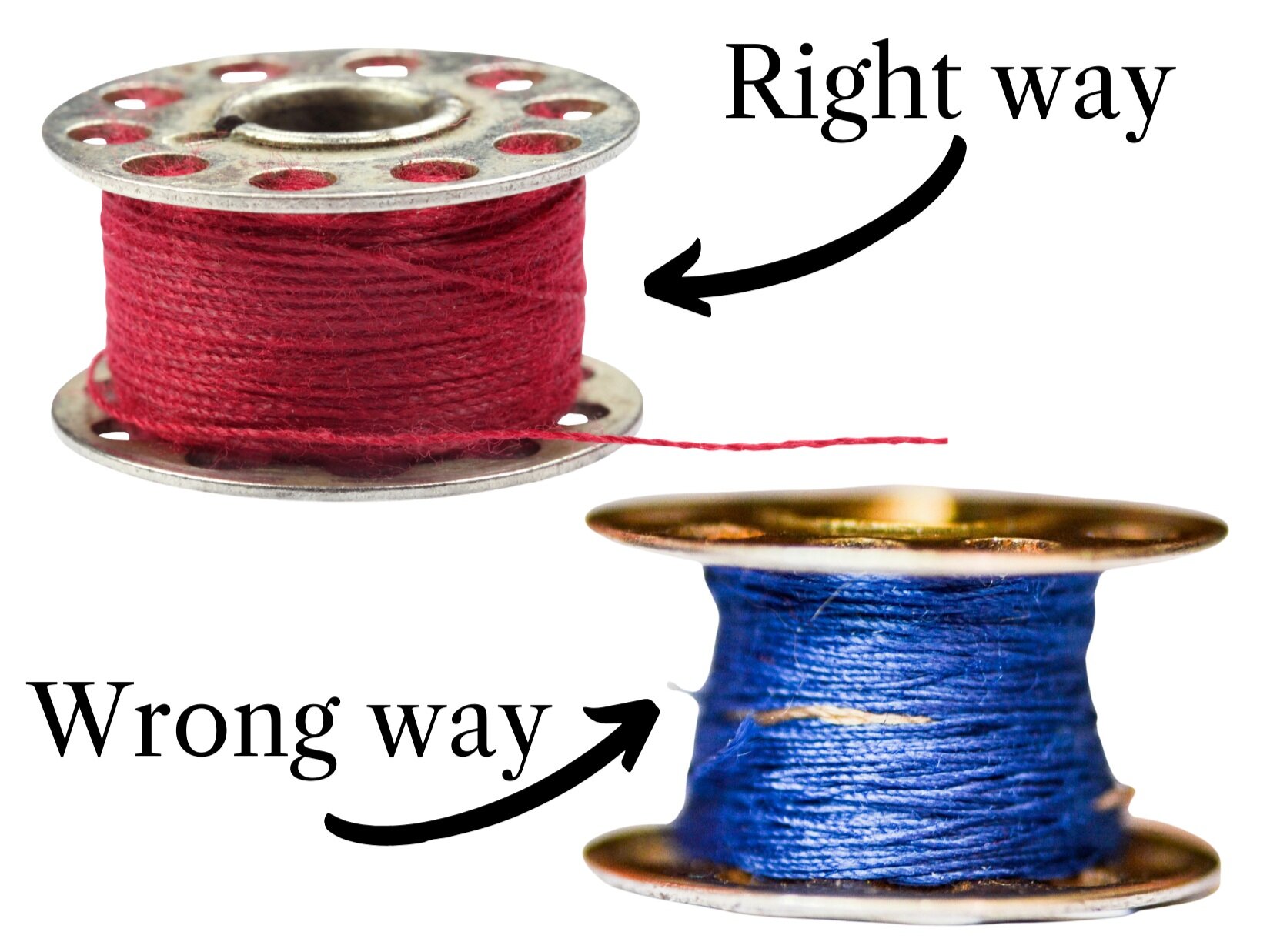What’s a Sewing Machine Bobbin? Learn How to Thread and Load Your Bobbin.
This post contains affiliate links. As an Amazon Associate I earn from qualified purchases.
My first exposure to bobbins came in college. I had a list of supplies and I had to go to the local Bernina store to buy a bobbin case. In my head I was thinking a bobbin case held multiple bobbins and was a way to stay organized. Imagine my surprise when I was handed a metal case to hold a single bobbin. To make matters worse it was open on one side! I had no idea what I was looking at or how it worked. Imagine my shock and awe when I showed up for my first day of class and discovered the bobbin went inside the case, which went inside my sewing machine to hold the bobbin thread!!!
A bobbin is the tiny spool of thread that sits in the bottom of your sewing machine. It assists the upper thread by making stitches on the bottom side of the fabric. It helps hold seams together. Front load bobbins need a bobbin case. Top load bobbins don’t. But when your bobbin doesn't work properly, you won’t be able to sew! Today I’m going to teach you the basics of bobbins, how to troubleshoot bobbin problems, and basic sewing maintenance.
The Basics of Bobbins:
Every sewing machine requires a bobbin to sew. However, the bobbin mechanism varies by brand.
Drop-In Bobbin (also called a Top Load Bobbin)
The bobbin fits into the arm of the machine and is “dropped in” by removing a plate in front of the presser foot. The thread is then pulled through the bobbin mechanism to get “picked up” by the needle. Once everything is threaded, snap the cover back on. Check the manual for directions to make sure yours is threaded properly.
Front-Load Bobbin
The bobbin fits into a metal case, which then snaps into the front of the machine. The thread from the bobbin feeds through the bobbin case before being “picked up” by the needle. Once everything is in place, close the door.
Neither system is better than the other; it comes down to personal preference. In my opinion, a front load bobbin is easier to thread. I learned to sew on a Bernina, which had a front load bobbin, and I’ve been partial ever since.
Regardless of where the bobbin eventually goes, bobbins wind thread the same way. When you start a sewing project, pay attention to the way thread feeds on to your bobbin. You want the thread to feed around the shaft of the bobbin, evenly from top to bottom. If the thread feeds more to one end of the shaft than the other, it will cause problems because the thread won’t come off the bobbin evenly during sewing. Uneven winding can cause the bobbin thread to break or bunch up on the underside of your seam.
Troubleshooting Bobbin Problems:
Whenever thread bunches up on the bottom side of your fabric, it’s a sign the bobbin is in trouble. Stop sewing and grab a piece of scrap fabric to troubleshoot the problem. Most bobbin problems come from improper threading into the machine or improper winding of thread on to the bobbin spool. Always check your manual and make sure your bobbin is snapped in place tight and threaded into your machine correctly. If your bobbin thread doesn’t catch the top thread coming from the needle, you’ll have thread snarling along the bottom of your seam. If your bobbin thread keeps breaking, the thread is likely wound on the bobbin shaft unevenly. When both of these steps work correctly and you’re still having problems, it’s time for seiwng machine maintenance.
Sewing Machine Maintenance:
Raise your hand if you’ve never thought about basic sewing machine maintenance. (You can’t see me, but I’m raising my hand too.) I sewed on my machine FOR YEARS without basic monthly maintenance or cleaning the feed dog. Just like changing your needle regularly, giving your machine some love and attention once a month will keep her sewing better for longer.
BEFORE DOING ANY MAINTENANCE CHECK
YOUR MANUAL
FOR SPECIFIC INSTRUCTIONS RELATED TO YOUR MACHINE!
Before you start make sure your machine is turned off and is disconnected from the power source. Remove the needle and presser foot. Lower the feed dog and remove the stitch plate. (Some stitch plates are held in place with screws; check your manual.) Using tweezers and/or a small brush, remove any trapped lint. Clean around the bobbin and remove any accumulated thread and debris. DON’T USE COMPRESSED AIR! The high pressure air pushes the lint further into your machine where it gets clogged in the sewing machinery. If you can’t get all of the lint out of your machine, use tiny attachments specially made for your vacuum cleaner.
Using your manual as a guide, oil your machine as directed. A couple of drops are enough to get things moving smoothly. Be sure to use oil made for sewing machines. I like Universal Sewing Machine Oil, available here on Amazon. The spout is flexible and extends up to 14.5 inches for hard to reach spots. I’ve used it to oil my Bernina, as well as my vintage Domestic and Singer Featherweight machines.
BROTHER MACHINES DO NOT RECOMMEND OILING YOUR MACHINE.
Per the manual, Brother sewing machines are manufactured with the necessary amount of oil to ensure correct operation.
If your bobbin thread related problems aren’t resolved by these trouble shooting and maintenance suggestions, it’s probably time to take your machine in for service. Drop-in bobbins can lose their tension with heavy use. Unfortunately, only a service technician can fix the problem. Most sewing machine manufacturers recommend annual service to keep your machine running in tip-top shape. Annual service runs anywhere from $75-$150 or more! If you take the time to regularly maintain your machine with the tips above, your machine will run well and you can avoid the annual cost. Because let’s face it, that money is better spent on more fabric!
Want more sewing tips and tricks from Sew Sew Lounge? Click here to join the interactive Facebook group, Let’s Talk Sewing for Beginners! hosted by Sew Sew Lounge. Weekly live events and plenty of helpful info to get you up and sewing in no time.
See you on the inside!
